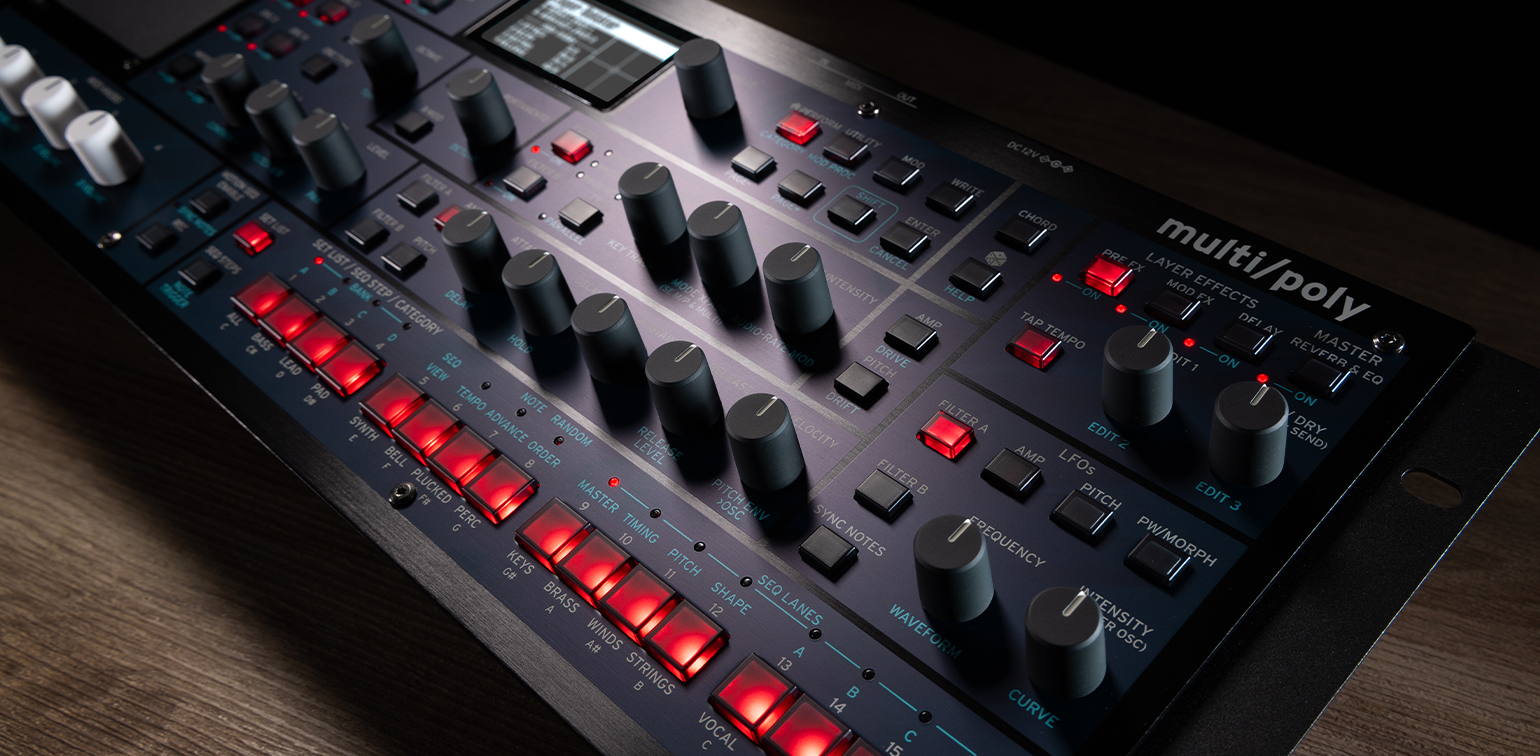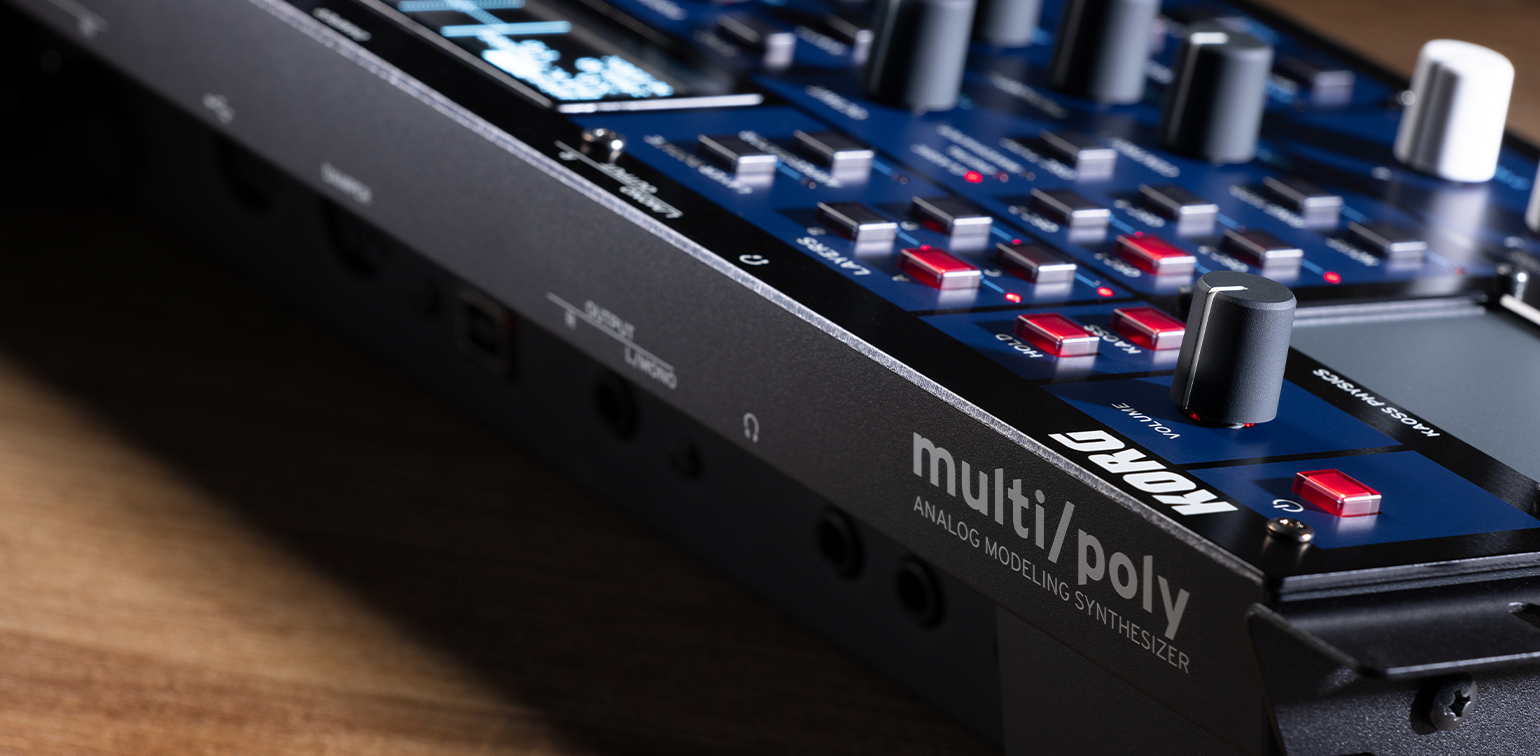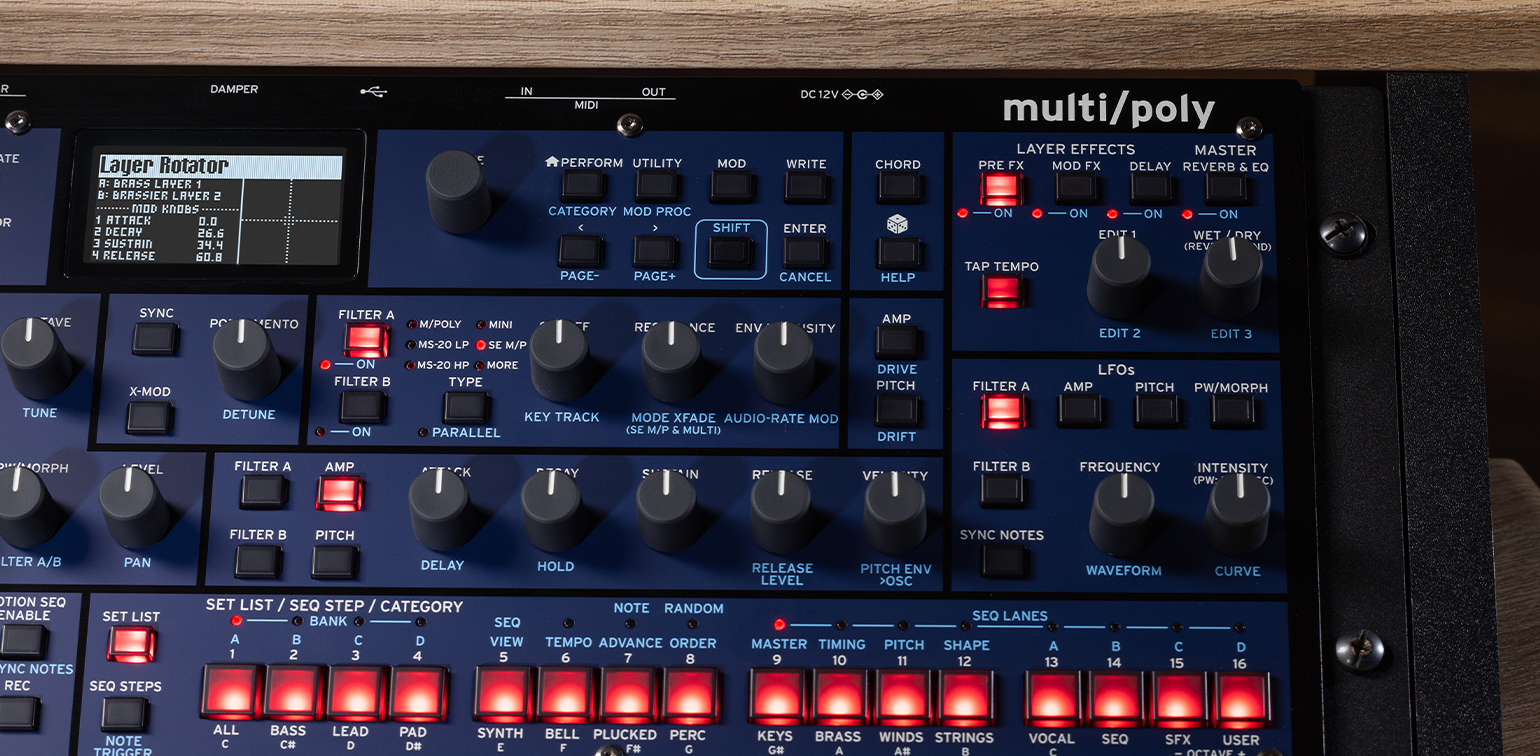The multi/poly module features redesigned, incredible-sounding filters and oscillators – and its advances in analog modeling go so much deeper. To start with, each voice has a Virtual Voice Card whose oscillators, filters, envelopes, LFOs, and portamento circuits model analog hardware component variations. The result is that each voice has a slightly different character, creating naturally rich timbres. Dial in as much or as little of this variation as you like, separately for each sound.
Just like in an analog synth, voice cards also continue to play even if you're not hearing them. Envelopes keep evolving, so that if you play a pad with a long release time, newly played notes "catch" the envelope at its current level instead of restarting from zero. Oscillators and LFOs maintain their phase, and resonance continues to ring. Each oscillator’s pitch can also drift slightly over time, modeling the slight pitch instabilities found in analog hardware.
Envelopes are an often-overlooked factor that contributes to the unique sounds of vintage synths. The multi/poly module includes envelope curvature presets for the Mono/Poly, MS-20, "Mini," "Pro," ARP Odyssey, and more. Also, analog VCAs don’t respond evenly to voltage, and have different thresholds for turning on and off, which in turn has a strong effect on the Amp Envelope's character. So, the multi/poly module features modeled VCA responses from the Mono/Poly, MS-20, Mini, Odyssey, and Pro, as well as a linear option.
Ever tried to re-create a portamento effect from a favorite song, but couldn't find the right setting even when you switched between "constant rate" and "constant time?" Classic analog synths had different approaches to portamento, too, and so the multi/poly has six different portamento models to choose from.














